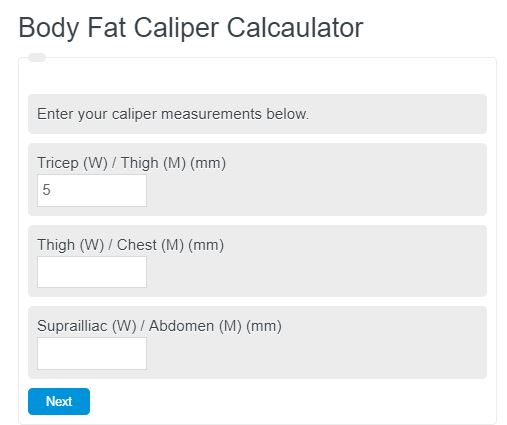

In view of estimation of various parameters of body composition, techniques that have been under practice include bioelectrical impedance analysis (BIA) for fat-free mass (FFM) and total body water (TBW), use of skinfold thickness for estimation of body fat percentage (%BF), body mass index (BMI), waist-to-hip ratio (WHR), dual-energy X-ray absorptiometry (DeXA), and air displacement plethysmography.Įven though BMI (calculated as weight/height2) is most widely used to assess obesity but as the FFM is also included in weight, the accuracy can be questioned in many conditions (acromegaly, kwashiorkor, Cushing’s syndrome, myxedema, etc.), and waist circumference (WC) and WHR are considered to be superior than BMI in predicting the risk of cardiovascular disease. Therefore, the frequent assessment of body composition for the prevention and management of obesity has become a common practice in the outpatient departments (OPDs) of almost all hospitals and clinics. It has been noticed by many researchers that India is also not the exception for it.
Body fat calculator caliper trial#
According to the recent trial conducted by McKinsey Global Institute, London, 2.1 billion adults of the world are obese (30% of the global population), and obesity is responsible for nearly 5% of all deaths and 20% of the health care expenditure on the prevention and management of obesity. Bhutan had the highest male and female prevalence (41% and 64%, respectively), followed by the Maldives (37% and 42%, respectively). In the South-East Asia Region (SEAR), physical inactivity is responsible for 5.1% of deaths, with the incidence of insufficient physical activity ranging from 3% to 41% among males and 6.6% to 64% among females. Lack of physical exercise is well known to contribute to overweight and obesity, which is a risk factor for several noncommunicable diseases (NCDs). Looking at the lesser sample size with all participants being males, we do not recommend the prediction equations to be used in clinical practice in spite of the high R 2 values. In the prediction equations, it was found that the skinfold thickness at the suprailiac region was not found to be the significant determining factor for estimation of %BF by SFC method as that by the US method. In our study, we arrived to the conclusion that even though the estimated %BF by both the methods were found to have a significant correlation with each other, the values were very less in case of the US method.
Body fat calculator caliper skin#
The best prediction equation for the %BF by SFC method was (R 2 = 84.8), where SFss and SFbi are skin fold thicknesses at subscapular and biceps regions, respectively, measured with SFCs, and that by the US method was (R 2 = 84.6), where USsi and USss are skinfold measurements at suprailiac and subscapular regions, respectively, measured by US technique. The %BF measured by US technique (%BF US) was significantly lesser, i.e., 20.69 (SD: 3.126 p < 0.0002), than that of the SFC method (%BF SFC), i.e., 30.38 (SD: 4.634), which is 0.68 % higher. It was observed that mean values of all the skinfold thicknesses along with the %BF measured by SFC were far more than those measured by US.

The prediction equations were developed from anthropometric and skinfold thickness data obtained from both the methods, i.e., SFC and US, by applying stepwise multiple linear regression. The data were analyzed for distribution, and independent t-test was applied to compare the difference between two means of a %BF estimated by both the methods. After collecting anthropometric data (age, height, weight, body mass index, waist circumference, hip circumference, waist-to-hip ratio, etc.), the skinfold thickness was measured at four standard sites (biceps, triceps, subscapular region, and suprailiac region) with skinfold caliper (SFC) and then B-mode US. This cross-sectional, observational, monocentric study was conducted on 43 Indian male volunteers aged 18 to 40 years. The aim of our study was to use B-mode ultrasound (US) for measuring the subcutaneous fat thickness and the calipers for skinfold thickness, and then compare, correlate, and derive the prediction equations for estimation of %BF by both the techniques. Therefore, no single standard prediction formula for the determination of body fat could be fixed. Although this technique is relatively inexpensive and easy to learn, there are more chances of errors while measuring the skinfold thickness by this method. The measurement of the skinfold thickness at various sites with the calipers has remained the traditional method for estimation of body fat percentage (%BF) in clinical practice.


 0 kommentar(er)
0 kommentar(er)
